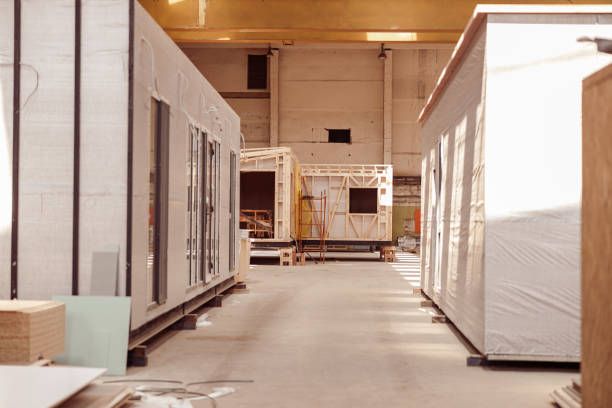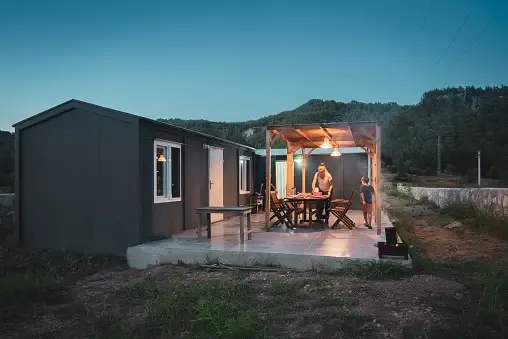Email: info@yimuhouse.com Whatsapp: (+86)13391718082

Get A Quote
What Is Prefabricated Housing?
Have you been learning about prefabricated homes lately? A prefabricated house, a type of container house, is more convenient than normal house, it's becoming popular with people recently, while what is it, what are the advantage of them? This article will take you through a comprehensive look at what a prefab home is and how much it costs, as well as what to look for when choosing to buy one!
What You Should Know about Prefabricated Homes?
Prefabricated homes, colloquially known as "prefabs," are constructed off-site in factories and then transported to the homeowner's property for assembly. They include mobile, manufactured, and modular homes, all falling under the prefab category. This method offers a quicker and more cost-effective way to build sustainable housing, contrasting traditional on-site construction. Prefabs are pre-built in a factory and relocated to the desired lot, requiring minimal on-site work for assembly.
Unlike conventional homes, which are constructed entirely on-site, prefabs streamline the building process by completing a significant portion of construction in a controlled factory setting before being transported for final touches on the property. Identifying prefabricated homes can be difficult, but there are several tips to help you observe the nature of prefabrication. Notable features include visible seams or joints, standardized components, and uniformity in materials. Additionally, reviewing construction records or permits may reveal if the home was assembled off-site. In essence, prefabricated homes revolutionize construction methods by streamlining the building process, employing diverse materials, and offering innovative assembly techniques, contributing to their growing popularity as an efficient and adaptable housing solution.
Are There Cost Considerations for Prefabricated Homes?
Prefabricated homes have a clear advantage over wood frame homes in terms on cost effectiveness. A typical wood frame home starts at about $150 per square foot, which compares very favorably to a prefabricated home. However, the actual cost of a prefabricated home depends on several factors. These include the number of stories in the prefabricated home, the complexity of the modular manufactured home design, and the degree of customization of the modular home.
Thus, whether one desires a snug bungalow retreat or an elegant two-story modular dwelling, prefab modular homes provide an affordable and adaptable solution tailored to specific needs. Identifying the absolute cheapest prefab house can be complex, as it depends on specific preferences and requirements. Generally, basic and compact prefab homes or simpler kit versions with fewer customization options tend to be more affordable.
Explore Options and Purchase Prefabricated Buildings
Determining the “best” prefab homes often hinges on individual preferences, desired features, and specific requirements. The “best” varies depending on factors such as architectural style, energy efficiency, material quality, and customization options that align with a buyer’s vision and needs. A prefab home kit typically includes all necessary materials for constructing a home, often in pre-cut or panelized formats. These kits can vary widely, from basic cabin kits to comprehensive packages with components like walls, roofing, doors, windows, flooring, and sometimes even fixtures and appliances.
Prefab homes come equipped with various components, including prefabricated walls, framing, roofing elements, doors, windows, insulation, fixtures, electrical wiring, plumbing, and interior finishes. Some manufacturers may offer additional features or upgrades based on buyer preferences. Yes, prefab houses are available for purchase. Prospective buyers can explore prefab homes from various manufacturers or work with builders specializing in prefab construction. Prefab homes can typically be built on various types of land or property, subject to local building codes and regulations. They can be constructed in urban or rural areas, depending on zoning laws and land availability. Prefab houses can be purchased directly from manufacturers, through builders specializing in prefab construction, or via real estate listings that feature prefab properties. The process of buying a prefab home involves several steps: researching manufacturers, selecting a design, finalizing customization options, obtaining financing, coordinating delivery and site preparation, signing contracts, and overseeing the construction process. Buyers may also need to consider permits, inspections, and other legal aspects specific to their location. Consulting with prefab home experts or real estate professionals specializing in prefab homes can streamline the purchasing process and ensure a smoother buying experience.
Modular vs. Prefabricated Homes
Prefab and modular homes represent two popular construction methods, often causing confusion due to their similarities and differences. Prefabricated homes encompass three main categories: modular, panel-built, and manufactured structures. Modular homes, a subset of prefabricated homes, are entirely constructed in factory settings and transported as sections to the site for assembly. In contrast, other prefabricated homes, like panel-built structures, are transported in segments and assembled on-site.Understanding the distinctions between modular and other prefabricated buildings is crucial. Modular construction prioritizes design team engagement, factory precision, and enhanced collaboration, ensuring efficiency and quality. These principles extend to other forms of prefab construction, streamlining the building process and enhancing project success.Prefabricated and modular buildings find application in diverse settings, from office spaces, commercial buildings, to portable structures. Modular homes offer stability, durability, and value, though some may resemble shipping containers, distinguishing them from other prefabricated structures. Notably, manufactured homes within the prefab category may not adhere to building codes as rigorously as modular homes, as they must comply with HUD standards. In essence, while modular construction showcases specific appearances akin to shipping containers, other prefabricated structures vary in style and design. Understanding these differences allows individuals to discern between the stability, durability, and architectural styles inherent in modular versus other prefab constructions.
Conclusion
In general, after reading this article, you certainly have a comprehensive understanding of prefabricated houses, if you want to learn more about prefabricated houses, come to Yimuhouse and then consult our experts.

